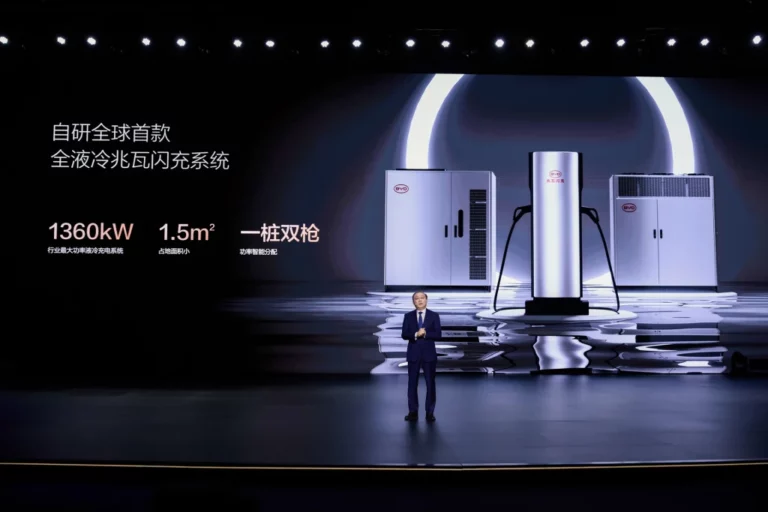Revolutionary EV Charging Technology
Filling up an SUV’s gas tank typically takes around five to six minutes. Now, China’s BYD has achieved a similar feat with its new electric SUV, capable of charging its battery in roughly the same time using one of the company’s innovative EV chargers.

This significant advancement is praised by John Helveston, an engineering management professor at George Washington University who specializes in China’s EV industry. “It’s certainly a feat of engineering to design a battery that can handle this kind of charging speed,” he says, noting that Tesla” is “not anywhere near this.” The company’s new charger boasts twice the power of Tesla’s latest supercharger.
BYD’s latest vehicles can handle 1,000 volts of power, and their new chargers are designed to match this capability. This means 249 miles of range can be added to a vehicle in just five minutes. BYD plans to install 4,000 of these new chargers across China.
Addressing Consumer Concerns
In the U.S., many consumers remain hesitant to adopt electric vehicles due to charging time concerns. While daily commutes can often be managed with home charging, and current EVs offer greater range than typical daily drives, improved charging options are crucial for wider EV adoption, especially for longer trips or those without easy access to charging infrastructure.
China is currently leading the world in EV battery technology, thanks to “strong industrial policy support by China’s government to build out the upstream material supply chain for over a decade,” according to Helveston. Companies like BYD are at the forefront of battery science innovation.
Rapid Technological Advancements
The pace of technological development in this field is remarkably fast. Dan Wang, a researcher at Yale Law School’s Paul Tsai China Center, notes that while Volkswagen and BMW might take five years to integrate new charging platforms, and Tesla might take a year, China can implement such changes in just three months.
The ease of approving and installing high-power chargers is also greater in China due to its state-owned power company structure. This contrasts with the U.S., where multiple players are involved, making the process more time-consuming and costly.
Grid Management Challenges
While high-power chargers could strain the electric grid if not managed properly, they could also benefit the grid if used strategically. For instance, charging during the day could utilize excess solar power.
As China continues to innovate in the EV sector, its grid management is likely to evolve to handle the increased demand more efficiently than in other countries. “We are moving to a future where fast charging is just going to be part of the ecosystem,” says Helveston. “Given the level of innovation happening in China’s EV sector, I expect the Chinese grid to develop the technology and processes to better handle these kinds of demands on the grid much more quickly than places like the U.S.”
Conclusion
BYD’s breakthrough in EV charging technology marks a significant step forward for the industry. With its innovative chargers and advanced battery technology, China is poised to lead the way in EV adoption, potentially setting a model for other countries to follow.”, “image_urls”: [ { “url”: “https://images.fastcompany.com/image/upload/f_webp,q_auto,c_fit,w_1024,h_1024/wp-cms-2/2025/03/i-1-91303128-byd-chargers.jpg“, “description”: “BYD’s new EV charger” } ]



